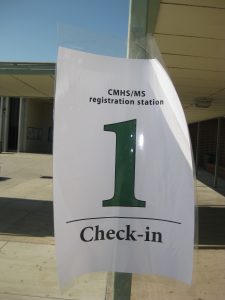First Impressions Matter
First impressions are lasting impressions. It takes just one-tenth of a second for an individual to make a judgment about someone or something, and most likely, that first impression will never change.
In the case of a school, how can you ensure that you are being judged accurately? How can you make a good first impression on parents? Successful schools do it all the time; they make themselves distinctive and memorable.

More and more, school choice is becoming a powerful element for parents, students, and teachers. It is the reason that a parent will travel across town to a different neighborhood daily in order for their child to attend a school outside of their immediate school zone. So what do successful schools do to create a good first impression and make traveling across town compelling enough to parents? Here are a few tips:

Your frontline should be a pleasure
There is nothing more frustrating to a potential parent than calling a school for information and hearing an unfriendly, unenthusiastic, unknowledgeable voice on the other end. On the phone or in person, your frontline staff should be courteous, helpful, and if needed, empathetic. Make an anonymous call to your school’s admissions office and see how you are treated. Email the admissions office and see how promptly you are answered. Note the quality of the response. Does it represent the atmosphere and feel that you want from your school?
School tours and visits weigh more than you think
Nothing sways a prospective parent more than a school tour. Your best people should be put on this important part of the public relations process. Make sure your tour guide is extremely knowledgeable and enthusiastic about the school. Parents like to see students in action, so plan tours during the time of day that most closely portrays "a day in the life" of a typical student. Have examples on hand that show accomplishments, events, or activities that set you apart from other schools.
Rehearse the entire experience so that you get it right. Take a tour with your designated tour guide from the perspective of a parent. When inspecting a school, parents don’t miss a thing and are easily impressed by enthusiasm, knowledge, and courtesy. Ask questions as if you were looking for a school for your own child.
Your website is your school's welcoming center
A school’s website is usually the first thing a visitor sees. A good website is cohesive, informative, and easy to navigate. Keep it simple and appealing with a logical flow of information and messaging. And most importantly, make sure your website is providing timely, up-to-date information. A school's website should reflect the school's strength and character and speak to its audience appropriately.
Laborious registration = unhappy parent
First impressions count in marketing your school just as much as they do in any endeavor. Are parents spending hours waiting in long lines to register? Are they required to fill out stacks of paperwork before even setting foot on your campus? Do they have to make several trips to your office over the summer to turn in paperwork? These types of activities create a negative first impression. No wonder parents aren’t excited about signing up for the PTA, volunteering as room mom, or contributing to your annual fundraiser. You’ve given them a bad first impression, so for the rest of the school year, they do whatever it takes to stay away.
Not only does an online registration system help increase enrollment and streamline the application and registration process, but it also portrays a stress-free, open, inviting environment for your parents.
When it comes to schools, school choice is a powerful element that can help create the conditions for a successful school. Families make relocating and home purchasing decisions around which schools they want or don’t want their children to attend. Don’t pass up an opportunity to show your best side. Put your best foot forward in the beginning so that parents receive an authentic impression.
What are you doing to make a good first impression and portray a stress-free, open, inviting environment to your parents?




 6. Provide good signage — Have adequate signage so parents know exactly where to go when they arrive. Have signs outside with a copy of the registration form pasted to it with instructions of where to go if they do not have the completed registration form.
6. Provide good signage — Have adequate signage so parents know exactly where to go when they arrive. Have signs outside with a copy of the registration form pasted to it with instructions of where to go if they do not have the completed registration form.
